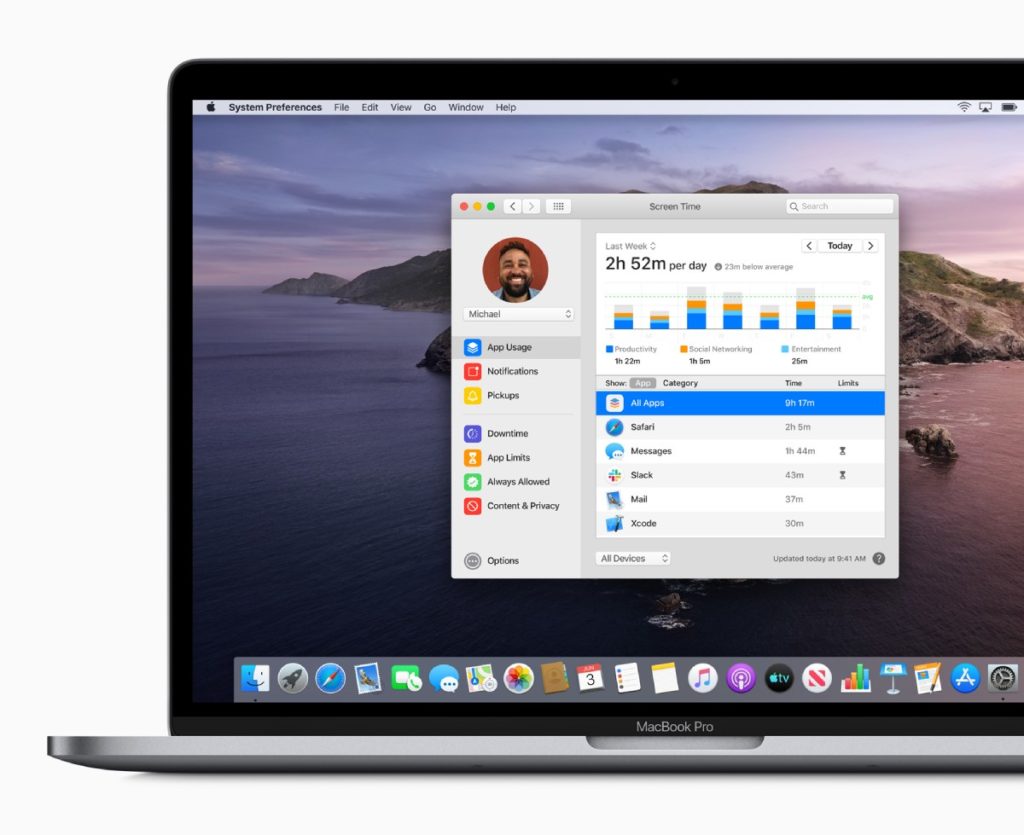Apple has officially released macOS Catalina (version 10.15). Here’s our pick of the best new features, advice for those who should hold off upgrading, and some handy tips.
Sayonara iTunes!

Starting with Catalina, iTunes has departed from macOS. The 18-year old software that began life as a music player and turned into a Swiss Army Knife of online services + iOS backup tool has been replaced by separate apps for each purpose – Music, TV, and Podcasts. You can now sync your iPhone or iPad directly in the Finder – more about that below.
Note that in order to get the new apps, you must upgrade to macOS Catalina. Users of macOS Mojave (version 10.14) and earlier will continue to use iTunes as before.
If you’re a Windows user, iTunes lives on in its current form (TIP: Use the packaged app from the Microsoft Store instead of the standalone installer to keep your system nice and clean).
Your iPad is Now a Monitor

The new Sidecar feature lets your idle iPad become a second display for your Mac, either mirrored or extended, wired or wireless.
However, this can only be used on a combination of the following –
- MacBook (Early 2016) or newer
- MacBook Pro (2016) or newer
- MacBook Air (2018) or newer
- iMac 27-inch (Late 2015) or newer
- iMac Pro (2017) or newer
- Mac Mini (2018)
- Mac Pro (2019)
with an iPad that supports Apple Pencil, running the new iPadOS –
- iPad (6th generation or newer)
- iPad Air (3rd generation)
- iPad mini (5th generation)
- iPad Pro 9.7-inch
- iPad Pro 10.5-inch
- iPad Pro 11-inch
- iPad Pro 12.9-inch (1st generation or newer)
Apple Pencil integration lets you use the iPad to write and draw in apps on the connected Mac – perfect for Photoshop, Illustrator, and annotating PDFs.
The connected iPad will also display a Touch Bar for macOS apps that support it, similar to the one found on newer Macbook Pros.
Voice Control
It is now possible to control your Mac entirely with voice commands.
Upgrades to the Siri speech recognition engine make for more accurate dictation.
Security and Privacy Improvements
Some under-the-hood and not-so-glamorous stuff that is making a welcome difference –
- Catalina checks with you before allowing apps to access your personal data folders, external drives, or cloud storage
- You’re also asked before an app can perform key logging or capture screenshots or screen video
- Gatekeeper ensures all new apps you install have been checked by Apple for known security issues
- Catalina runs in a dedicated, read-only system volume, completely separate from all other data for improved security and stability
- If your Mac has the T2 Security Chip, you are the only person who can erase and reactivate it when lost or stolen
- Safari warns you if you are attempting to use a weak password
- Mail now lets you block senders and mute threads
Other Highlights

- Digital wellbeing via Screen Time comes to macOS with usage reports, scheduled downtime, and app usage limits
- Japanese language input predictions have been improved by taking into account earlier words in a sentence
- Developers can now easily port iPad apps to macOS - expect to see lots arriving soon in the App Store
- A new design for the Photos app with larger previews, organization by time period, personalization settings, and automatic recommendations for your best shots
- Notes gets a thumbnail view, shared folders, view-only access, and improved search
- Find My - As on iOS 13, Find My iPhone and Find My Friends are now combined into a single app
- Picture in Picture (PiP) in QuickTime player
- Approve passwords and app installations with Apple Watch
Can I Upgrade My Mac to Catalina?
macOS Catalina is compatible with the following machines –
- MacBook Air (2012 or newer)
- MacBook Pro (2012 or newer)
- MacBook (2015 or newer)
- iMac (2012 or newer)
- iMac Pro (2017)
- Mac mini (2012 or newer)
- Mac Pro (2013 or newer)
TIP: Don't Upgrade Just Yet If...
You Rely on 32-bit Apps
MacOS Catalina removes support for 32-bit apps completely. You may have seen a nagging reminder box while using macOS High Sierra or Mojave if you use certain 32-bit apps a lot.
Before you upgrade, find out what 32-bit apps you have installed by going to Apple Menu > About This Mac > System Report > Legacy Software. All apps in this list are 32-bit.
If you don’t see the above option, go to Apple Menu > About This Mac > System Report > Software > Applications. Expand the box till you see the ’64-bit’ column on the far right and click its header to sort the list. Any apps marked with ‘No’ are 32-bit.
Time to upgrade those apps or find a 64-bit replacement that does the same thing!
You Use Adobe Software
If you are dependent on Adobe apps to do your job, hold off with the Catalina upgrade for now. Legacy Creative Suite apps (pre-Creative Cloud) are 32-bit and will no longer work. Adobe is also reporting issues with other apps that may contain 32-bit licensing components and have set up an official support thread.
You Use Microsoft Office for Mac 2011
All Microsoft Office for Mac 2011 apps are 32-bit. The suite reached end of support and hasn’t been updated since September 2017. For improved security and ongoing updates we recommend upgrading to the latest Office 365, which is compatible with Catalina.
You Use Reminders on Old Devices
The Reminders app has been given an overhaul that requires a combination of macOS Catalina and iOS 13 for syncing to work properly. If any devices running an older OS are brought into the mix syncing will likely be disabled. See the Apple support article here.
A temporary workaround is to access Reminders in the browser at icloud.com.
You Are a DJ
If iTunes library XML files are an essential part of your workflow, they will be sorely missed in Catalina. Best to wait until a usable fix appears. More details here.
TIP: How to Backup Your iPhone in Catalina
- Connect your iPhone/iPad to your Mac with a USB cable.
- It will then appear in the Finder window sidebar under Locations.
- Click to see an overview of the device's status if this doesn't show automatically.
- The first time you do this, you need to trust the device and enter the passcode on your iPhone or iPad.
- From there you can sync, update, or restore as you previously did in iTunes.
Need Help with Apple Devices in Japan?
The METHOD IT team in Tokyo has been working with Macs for 20+ years, and every iOS device from the beginning. We can help with installation, upgrades, and troubleshooting for all Apple products with our fast and friendly English-Japanese bilingual support.
We can also procure Apple devices in Japan for use in your organization, and provide Mobile Device Management (MDM) solutions for deploying Apple hardware in business environments of all sizes.
Open a support ticket or request a quote now.